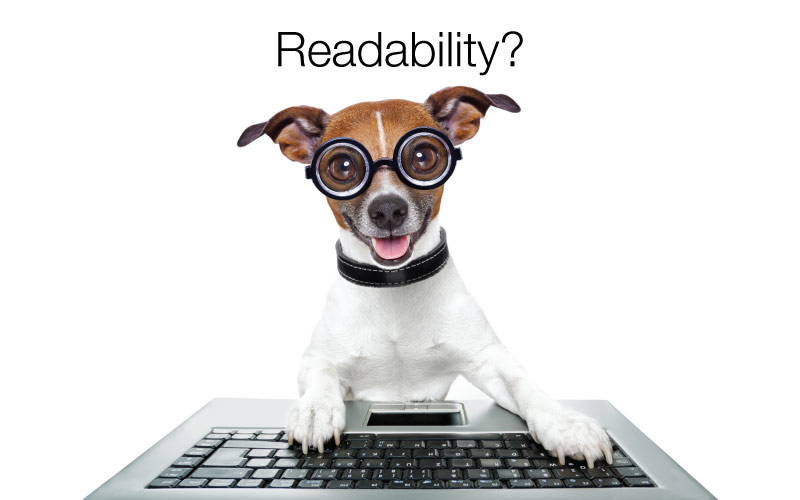Readability is a very interesting and important topic. It is speculated that Google takes the reading level of a page into consideration, however there is conflicting schools of thought about how to optimize reading level. A very basic reading level could appeal to a broader audience, however a higher reading level could indicate a higher quality page. In general, you should create content that will best cater to the audience that you are marketing to and create content at a reading level that is most appropriate to the subject matter.

Aside from the reading level of your content, the readability of the page is different. The readability of your page relates to how easy it is for a person’s eyes to attempt to read the words. Typically people don’t actually read content letter to letter, word to word, but instead skim content and recognize shapes. Their brain then decodes these shapes and assigns meaning. This realization was the result of a 15 year study and described by Bill Hill of Microsoft in 1999. Here are the factors that affect the readability of your page:
Word and line spacing: Provide enough spacing to make it easy for readers eyes to recognize the shapes of words.
Use uppercase sparingly: All caps is more difficult to read because it changes the natural shape patterns that our eyes have come to recognize.
Avoid long lines of text: The brain tends to process complete thoughts and if your sentences run on for too long the readers mind will tend to wander.
Build contrast into each page: It is easier to read a page that includes good use of white space and paragraphs that are broken up by headings, sub-headings, block quotes, etc…
Keep sub-headings short: Use the minimum number of words required. Entice the reader to read the next paragraph.
What’s The Takeaway?
Make Your Pages A Pleasure To Read!
Next In the next lesson we talk about
